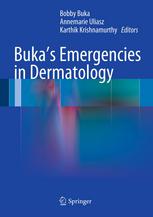

Most ebook files are in PDF format, so you can easily read them using various software such as Foxit Reader or directly on the Google Chrome browser.
Some ebook files are released by publishers in other formats such as .awz, .mobi, .epub, .fb2, etc. You may need to install specific software to read these formats on mobile/PC, such as Calibre.
Please read the tutorial at this link: https://ebookbell.com/faq
We offer FREE conversion to the popular formats you request; however, this may take some time. Therefore, right after payment, please email us, and we will try to provide the service as quickly as possible.
For some exceptional file formats or broken links (if any), please refrain from opening any disputes. Instead, email us first, and we will try to assist within a maximum of 6 hours.
EbookBell Team

4.8
14 reviewsThe term “dermatologic emergency” is rarely used, and a dermatologist is typically not the first physician called when a patient presents in the emergency department. However, largely under-recognized dermatoses can be life-threatening if not diagnosed and treated in a timely fashion. Buka's Emergencies in Dermatology addresses the need for a concise, portable reference that can be used by emergency medicine and dermatology physicians and residents alike.
This book, heavily illustrated with color images, proves to be especially critical if a community-based hospital does not have a dermatology department and the responsibility for initial diagnosis falls to the emergency room or critical care physician. However, since the majority of cutaneous outbreaks are not life-threatening, it is often the case that emergency department personnel are less equipped to diagnose these conditions correctly.
Buka's Emergencies in Dermatology addresses this concern and focuses on the most critical issues related to emergencies in dermatology, beginning with a general overview of the basics of critical care for dermatologic emergencies, then moving to neonatal and pediatric emergencies, infectious emergencies, drug eruptions, and HIV-AIDS-related emergencies in dermatology, just to name a few.